Recombinant Mouse Methylcytosine dioxygenase TET1 (Tet1), partial
-
中文名稱:小鼠Tet1重組蛋白
-
貨號(hào):CSB-EP668888MO-B
-
說明書:
-
規(guī)格:
-
來源:E.coli
-
共軛:Avi-tag Biotinylated
E. coli biotin ligase (BirA) is highly specific in covalently attaching biotin to the 15 amino acid AviTag peptide. This recombinant protein was biotinylated in vivo by AviTag-BirA technology, which method is BriA catalyzes amide linkage between the biotin and the specific lysine of the AviTag.
-
其他:
產(chǎn)品詳情
-
純度:>85% (SDS-PAGE)
-
基因名:Tet1
-
Uniprot No.:
-
別名:Tet1; Cxxc6; Kiaa1676; Methylcytosine dioxygenase TET1; EC 1.14.11.n2; CXXC-type zinc finger protein 6; Ten-eleven translocation 1 gene protein homolog
-
種屬:Mus musculus (Mouse)
-
蛋白長度:Partial
-
蛋白標(biāo)簽:Tag?type?will?be?determined?during?the?manufacturing?process.
The tag type will be determined during production process. If you have specified tag type, please tell us and we will develop the specified tag preferentially. -
產(chǎn)品提供形式:Lyophilized powder
Note: We will preferentially ship the format that we have in stock, however, if you have any special requirement for the format, please remark your requirement when placing the order, we will prepare according to your demand. -
復(fù)溶:We recommend that this vial be briefly centrifuged prior to opening to bring the contents to the bottom. Please reconstitute protein in deionized sterile water to a concentration of 0.1-1.0 mg/mL.We recommend to add 5-50% of glycerol (final concentration) and aliquot for long-term storage at -20℃/-80℃. Our default final concentration of glycerol is 50%. Customers could use it as reference.
-
儲(chǔ)存條件:Store at -20°C/-80°C upon receipt, aliquoting is necessary for mutiple use. Avoid repeated freeze-thaw cycles.
-
保質(zhì)期:The shelf life is related to many factors, storage state, buffer ingredients, storage temperature and the stability of the protein itself.
Generally, the shelf life of liquid form is 6 months at -20°C/-80°C. The shelf life of lyophilized form is 12 months at -20°C/-80°C. -
貨期:Delivery time may differ from different purchasing way or location, please kindly consult your local distributors for specific delivery time.Note: All of our proteins are default shipped with normal blue ice packs, if you request to ship with dry ice, please communicate with us in advance and extra fees will be charged.
-
注意事項(xiàng):Repeated freezing and thawing is not recommended. Store working aliquots at 4°C for up to one week.
-
Datasheet :Please contact us to get it.
靶點(diǎn)詳情
-
功能:Dioxygenase that catalyzes the conversion of the modified genomic base 5-methylcytosine (5mC) into 5-hydroxymethylcytosine (5hmC) and plays a key role in active DNA demethylation. Also mediates subsequent conversion of 5hmC into 5-formylcytosine (5fC), and conversion of 5fC to 5-carboxylcytosine (5caC). In addition to its role in DNA demethylation, plays a more general role in chromatin regulation by recruiting histone modifying protein complexes to alter histone marks and chromatin accessibility, leading to both activation and repression of gene expression. Plays therefore a role in many biological processes and diseases, including stem cell maintenance, T and B-cell development, inflammation regulation, iron homeostasis, neural activity or DNA repair. Involved in the balance between pluripotency and lineage commitment of cells it plays a role in embryonic stem cells maintenance and inner cell mass cell specification. Plays an important role in the tumorigenicity of glioblastoma cells. TET1-mediated production of 5hmC acts as a recruitment signal for the CHTOP-methylosome complex to selective sites on the chromosome, where it methylates H4R3 and activates the transcription of genes involved in glioblastomagenesis. Binds preferentially to DNA containing cytidine-phosphate-guanosine (CpG) dinucleotides over CpH (H=A, T, and C), hemimethylated-CpG and hemimethylated-hydroxymethyl-CpG. Plays an essential role in the protection and maintenance of transcriptional and developmental programs together with QSER1 to inhibit the binding of DNMT3A/3B and therefore de novo methylation.
-
基因功能參考文獻(xiàn):
- Results indicate that tet oncogene 1 protein (Tet1) and tet oncogene 2 protein (Tet2) play a critical role in maintaining bone marrow MSCs (BMMSCs) and bone homeostasis through demethylation of P2X7 purinoceptor (P2rX7) to control exosome and miRNA release. PMID: 29858571
- DNMT3A and TET1 regulate the epigenome and gene expression at specific targets via their functional interplay. PMID: 30001199
- Tet1 overexpression affected adult neurogenesis with oligodendrocyte differentiation in the hippocampal dentate gyrus of Tet1-TG mice. In addition, Tet1 overexpression induced the elevated expression of immediate early genes, such as Egr1, c-fos, Arc, and Bdnf, followed by the activation of intracellular calcium signals in prefrontal and hippocampal neurons. PMID: 28899881
- mRNA expression in trophoblast cell populations from embryonic (E) day 8.5 to E12.5, including in progenitor and differentiated cells; expression restricted to specific trophoblast giant cell subtypes by late gestation (E14.5-E18.5) PMID: 29108636
- The down-regulation of TET1 relieves its repression of the methylated Lhb gene promoter, which is then hydroxymethylated and activated by TET2 for full reproductive competence. PMID: 28855337
- Tet1 deficiency is associated with hypermethylation of a subset of ICRs in germ cells. PMID: 29530881
- e results showed mTet1 modified mGSCs had better self-renewal and proliferation ability than wild-type mGSCs, mTet1 could also up-regulate JMJD3 to decrease H3K27me3, which also showed to suppress the MEK-ERK pathway. Furthermore, Co-IP analysis demonstrated that TET1 interact with PCNA and HDAC1 by forming protein complexes to comprehensively regulate dairy goat mGSCs and spermatogenesis. PMID: 27857213
- Iron(II)/alpha-Ketoglutarate-Dependent Catalytic Domains of the TET Enzymes PMID: 27362828
- Tet1/2/3 proteins have a key role in modulating Wnt signaling and establishing the proper balance between neural and mesodermal cell fate determination in mouse embryos and embryonic stem cells PMID: 27930333
- TET1 and TET2 play an important role in the proliferation of neural stem cells in the adult mouse brain. PMID: 27778125
- findings reveal a novel role for TET1, an enzyme important for DNA hydroxymethylation, in the brain's reward circuitry in modulating stress responses in mice. Also identify a subset of genes that are regulated by TET1 in this circuitry. PMID: 28074830
- these results indicate that miR-29 is a direct regulator of Tet1 in mouse ESCs PMID: 27449105
- a mechanism how L1 elements get activated in the absence of Mecp2 PMID: 28524723
- Nanog, Oct4 and Tet1 interplay in establishing stem cell pluripotency has been described. PMID: 27146218
- that Tet1 modulates HIF-2alpha and HIF-1alpha through different mechanisms. PMID: 29036334
- TET1 is an epigenetic determinant for regulating genes that are crucial to closure of the anterior neural tube. PMID: 26989192
- Tet enzymes play important roles in telomere maintenance and chromosomal stability of embryonic stem cells by modulating sub-telomeric methylation levels. PMID: 27184841
- MBD1 regulates localization and activity of Tet1 in a CXXC3 domain-dependent manner. PMID: 28449087
- TET1 regulates numerous genes defining differentiation programs in the epiblast and extraembryonic ectoderm. In epiblasts, TET1 demethylates gene promoters via hydroxymethylation and maintains telomere stability. It represses a majority of epiblast target genes independent of methylation, partly by regulation of the JMJD8 gene. Dysregulated gene expression in the absence of TET1 causes embryonic defects. PMID: 28504700
- Isoform switch of TET1 regulates DNA demethylation and mouse development. PMID: 27916660
- Low TET1 expression is associated with Liver Cancer. PMID: 27197233
- Zfp281 interacts with Tet1, but not Tet2, and its direct transcriptional target, miR-302/367, to negatively regulate Tet2 expression to establish and maintain primed pluripotency. PMID: 27345836
- Our data implicate TET enzymes ( TET1 and TET2 )in the evolutionary dynamics of TEs, both in the context of exaptation processes and of retrotransposition control. The dual role of TET action on LINE-1s may reflect the evolutionary battle between TEs and the host PMID: 27863519
- our findings reveal that TET1 forms a complex with hMOF to modulate its function and the level of H4K16Ac ultimately affect gene expression and DNA repair. PMID: 27733505
- a complex relationship between ten-eleven translocation (TET) proteins and retrotransposons in mouse embryonic stem cells (ESCs), implicating TETs as enhancers in the exaptation and function of retroelement sequences. PMID: 27993162
- Tet1-mediated DNA hydroxymethylation plays a critical role in the epigenetic regulation of the Wnt pathway in intestinal stem and progenitor cells and consequently in the self-renewal of the intestinal epithelium. PMID: 27856615
- The current Tet1 RefSeq mRNA sequences (NM_001253857.1 and NM_027384.1) start with the coding sequence and lack the 5'UTR. We describe in this paper two previously unannotated alternative 5'UTR exons in the gene Tet1. Transcripts initiated from exon 1b are expressed highly in mouse embryonic stem cells, whereas those initiated from exon 1a are constitutively expressed at low levels in adult tissues. PMID: 25582196
- this study demonstrates the critical role of TET proteins in regulating the crosstalk between two key epigenetic mechanisms. PMID: 27288448
- results suggest that the miR-29a-Tet1 pathway upregulates MyoD expression and conversely downregulates Cdk6 expression PMID: 27349543
- results show that TET-mediated oxidation of 5-methylcytosine modulates Lefty-Nodal signalling by promoting demethylation in opposition to methylation by DNMT3A and DNMT3B; findings reveal a fundamental epigenetic mechanism featuring dynamic DNA methylation and demethylation crucial to regulation of key signalling pathways in early body plan formation PMID: 27760115
- TET1 accelerates neurogenesis onset time in the fetal brain.TET1 appears to not be associated with gliogenesis during fetal brain development. PMID: 26902115
- Reprogramming of spermatogonial stem cells from Tet1 and Tet2 double knockout mice however lacked demethylation of H19 imprinting control regions. PMID: 26328763
- The critical roles of TET1/2 individually. PMID: 26586431
- These results uncover the hypermethylation of DNA methylation canyons as the genomic key feature of Tet1/Tet2 double-knockout mouse embryonic fibroblasts. PMID: 26598602
- Lin28A binds active promoters and recruits Tet1 to regulate gene expression via epigenetic DNA modifications. PMID: 26711009
- Knockdown of Tet1 and Tet3 by RNAi in ex vivo cerebellar slice cultures inhibits dendritic arborization of developing cerebellar granule cells, a critical step in circuit formation PMID: 26711116
- findings demonstrate that DAZL associates with mRNA of Tet1, a catalyst of 5-hydroxylation of methyl-cytosine, and enhances Tet1 mRNA translation; DAZL enhances TET1-mediated cytosine hydroxymethylation in embryonic stem cells that are actively reprogramming to a pluripotent ground state PMID: 26077710
- The miR-29b/Tet1 regulatory axis promotes the mesendoderm lineage formation by inducing the Nodal signaling pathway and repressing the key target of the active demethylation pathway, thymine DNA glycosylase. PMID: 26130713
- Both TET1 and TET2 are required for the repression of embryonic stem cells differentiation by PRDM14. PMID: 26325469
- This study expands the knowledge about Tet1 involvement in stemness circuits in embryonic stem cells and provides evidence for a transcriptional relationship between Tet1 and Polycomb repressive complex 2 in adult proliferating cells. PMID: 25925565
- Embryos lacking Tet1 and Tet3 (Tet1/3 DKO) displayed a strong loss of 5-hydroxymethylcytosine (5hmC) and a concurrent increase in 5-methylcytosine (5mC) at the eight-cell stage. PMID: 26199412
- reduced expression leads to Foxp3 hypermethylation and impairment of Treg-cell-associated immune homeostasis PMID: 26275994
- these findings provide in vivo evidence of a function for TET1 as a tumor suppressor of hematopoietic malignancy. PMID: 25867473
- Coordination of engineered factors with TET1/2 promotes early-stage epigenetic modification during somatic cell reprogramming. PMID: 24672749
- Suz12-dependent recruitment of Tet1 contributes to epigenetic plasticity throughout cell differentiation. PMID: 23987249
- TET1, TET2 and TET3 mediated DNA demethylation and played role in mouse development.[review] PMID: 25608811
- Tet oxidizes thymine to 5-hydroxymethyluracil in mouse embryonic stem cell DNA. PMID: 24838012
- data point to a complex interplay between Tet1 and Tet2 in mESC, and to distinct roles for these two proteins in regulating promoter, exon, and polyadenylation site usage in cells PMID: 24474761
- Although TET1 and TET2 also interact with and can be O-GlcNAcylated by OGT, neither their subcellular localization nor their enzymatic activity are affected by OGT. PMID: 24394411
- PRDM14 physically interacts with TET1 and TET2 and enhances the recruitment of TET1 and TET2 at target loci. Knockdown of TET1 and TET2 impaired transcriptional regulation and DNA demethylation by PRDM14. PMID: 24335252
顯示更多
收起更多
-
亞細(xì)胞定位:Nucleus. Chromosome.
-
蛋白家族:TET family
-
組織特異性:Present in embryonic stem cells (ES cells) when its paralogs TET2 and TET3 are not detectably expressed.
-
數(shù)據(jù)庫鏈接:
STRING: 10090.ENSMUSP00000133279
UniGene: Mm.17774
Most popular with customers
-
Recombinant Human papillomavirus type 16 Protein E7 (E7) (Active)
Express system: E.coli
Species: Human papillomavirus type 16
-
Recombinant Human Somatostatin receptor type 2 (SSTR2)-VLPs (Active)
Express system: Mammalian cell
Species: Homo sapiens (Human)
-
Recombinant Macaca fascicularis lymphocyte antigen 6 family member G6D (LY6G6D) (Active)
Express system: Yeast
Species: Macaca fascicularis (Crab-eating macaque) (Cynomolgus monkey)
-
Recombinant Macaca fascicularis C-type lectin domain family 4 member C(CLEC4C), partial (Active)
Express system: Mammalian cell
Species: Macaca fascicularis (Crab-eating macaque) (Cynomolgus monkey)
-
Recombinant Human B- and T-lymphocyte attenuator(BTLA), partial (Active)
Express system: Mammalian cell
Species: Homo sapiens (Human)
-
Recombinant Human Urokinase-type plasminogen activator(PLAU) (Active)
Express system: Mammalian cell
Species: Homo sapiens (Human)
-
Recombinant Human Tumor necrosis factor ligand superfamily member 15(TNFSF15) (Active)
Express system: Mammalian cell
Species: Homo sapiens (Human)



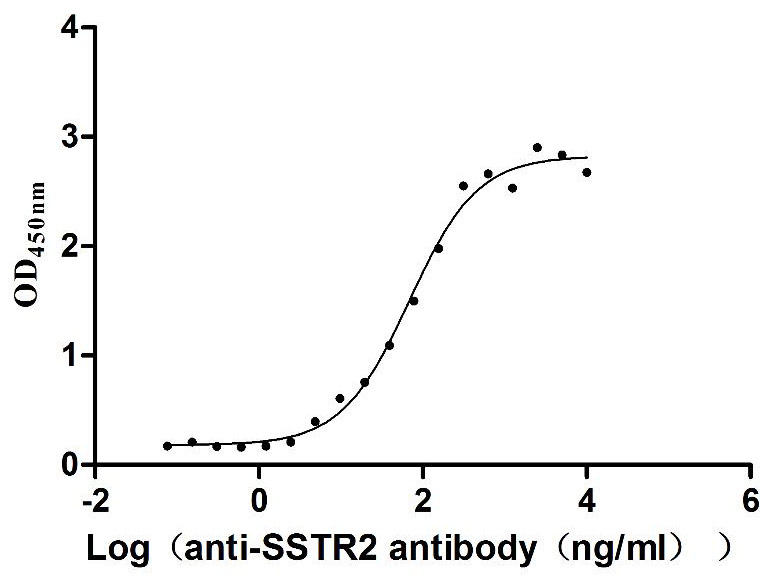
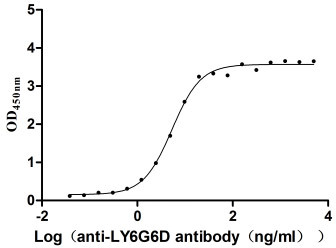
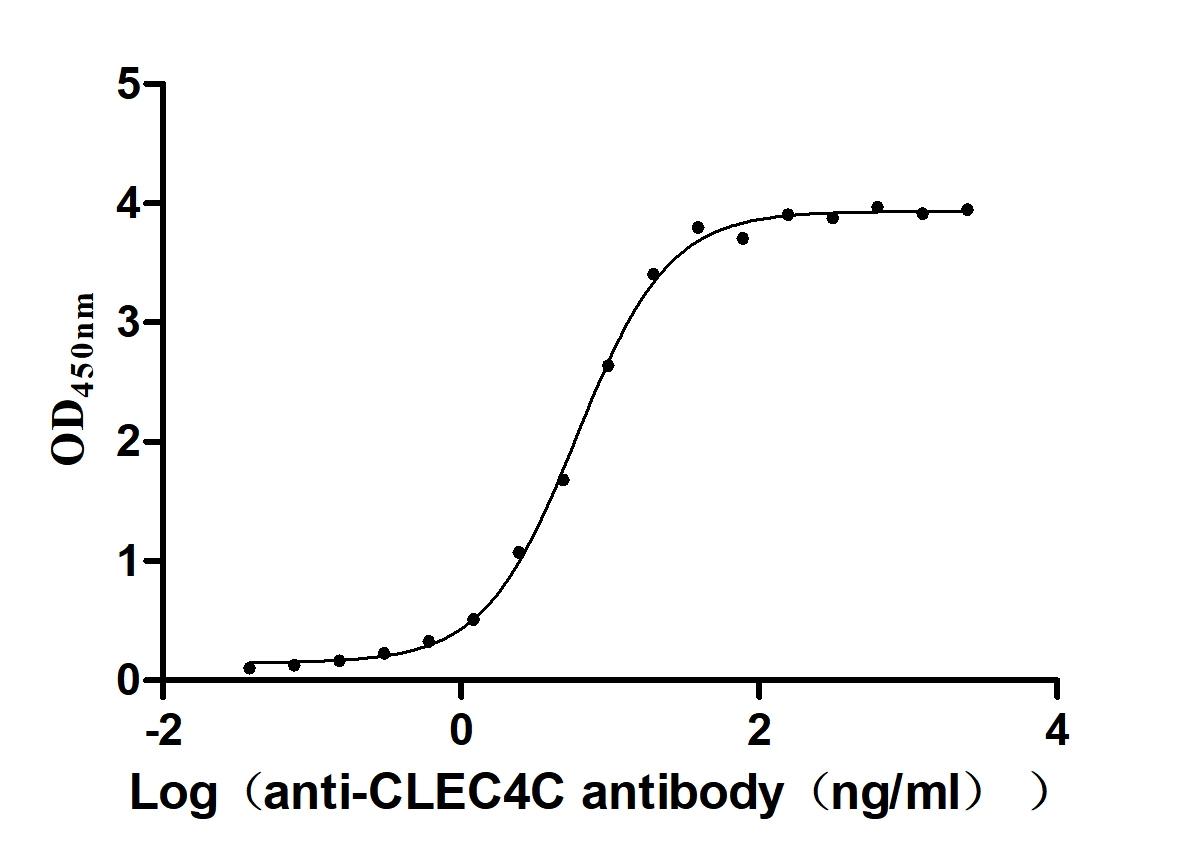
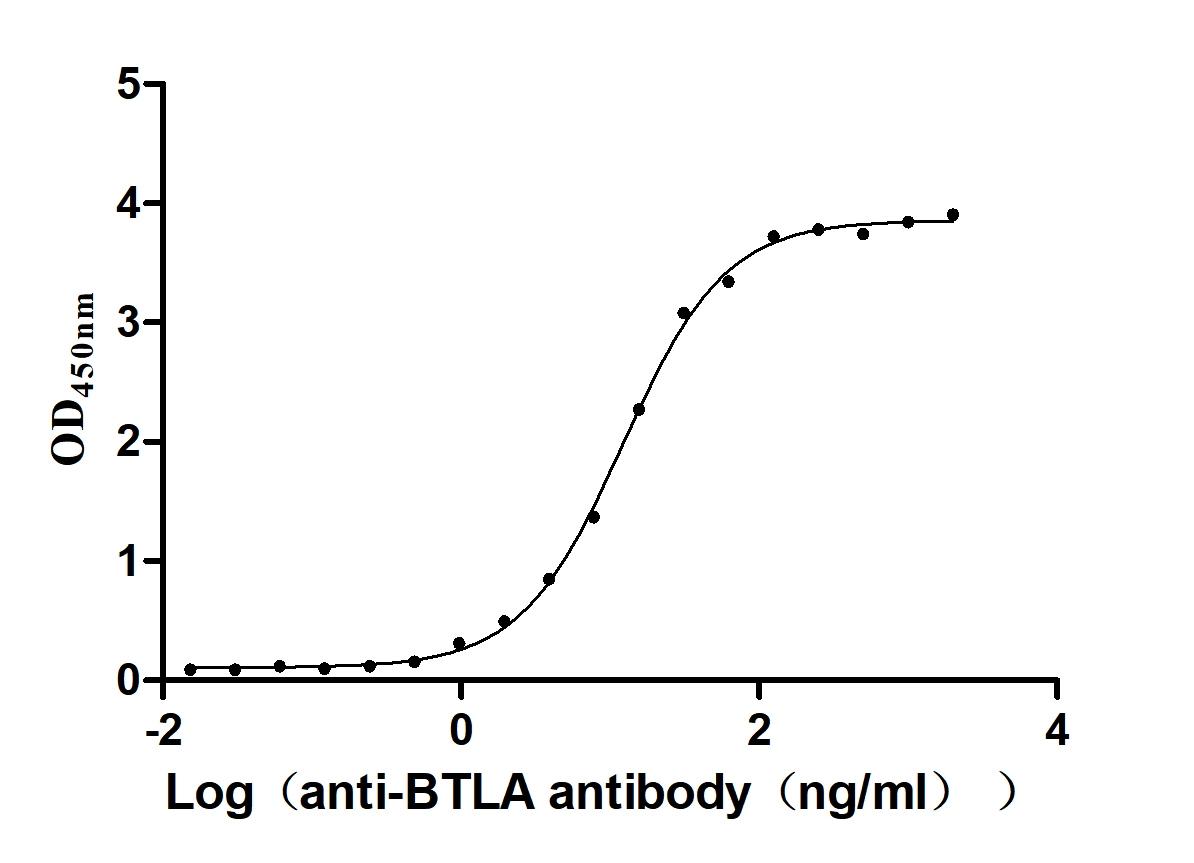
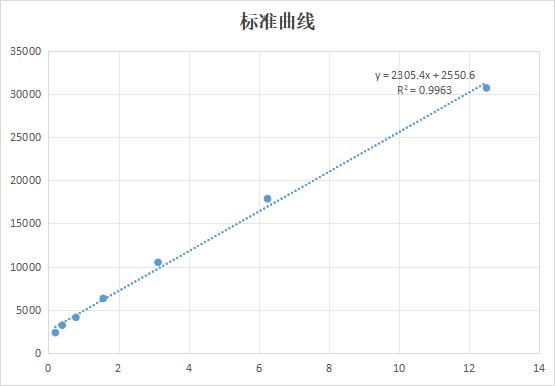
-AC1.jpg)









